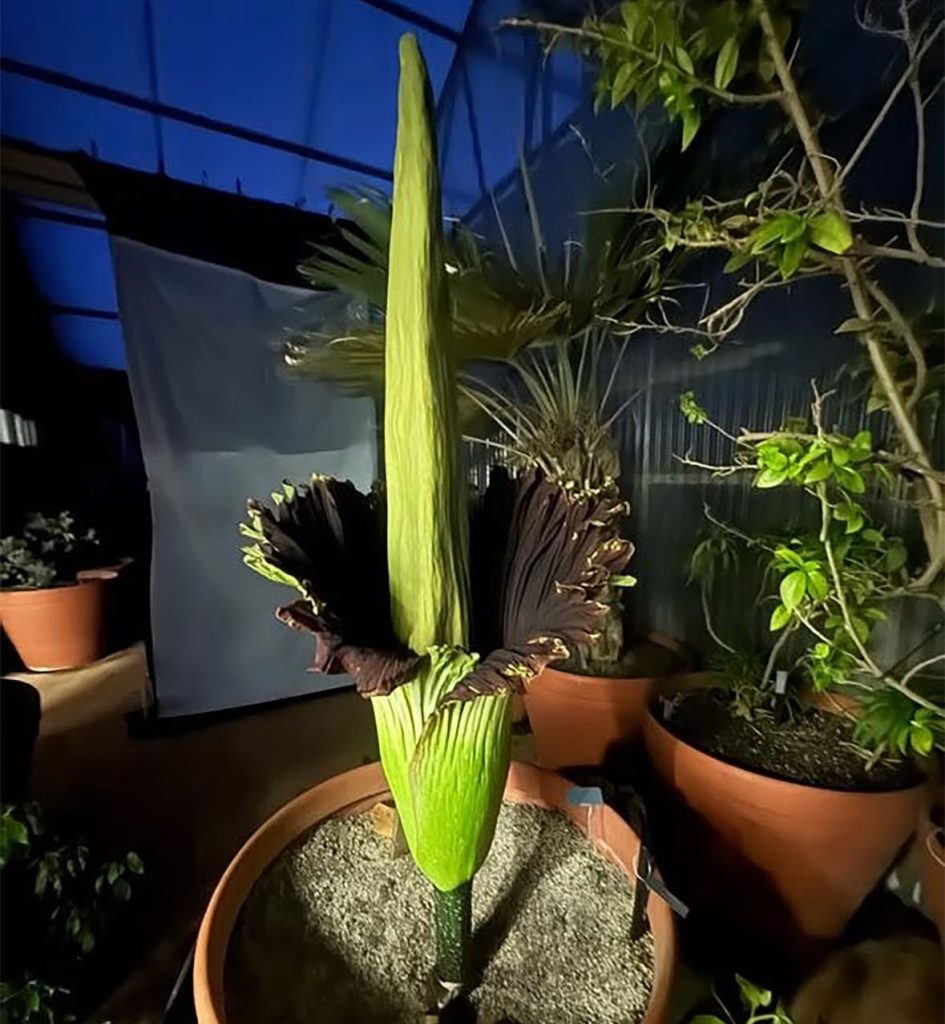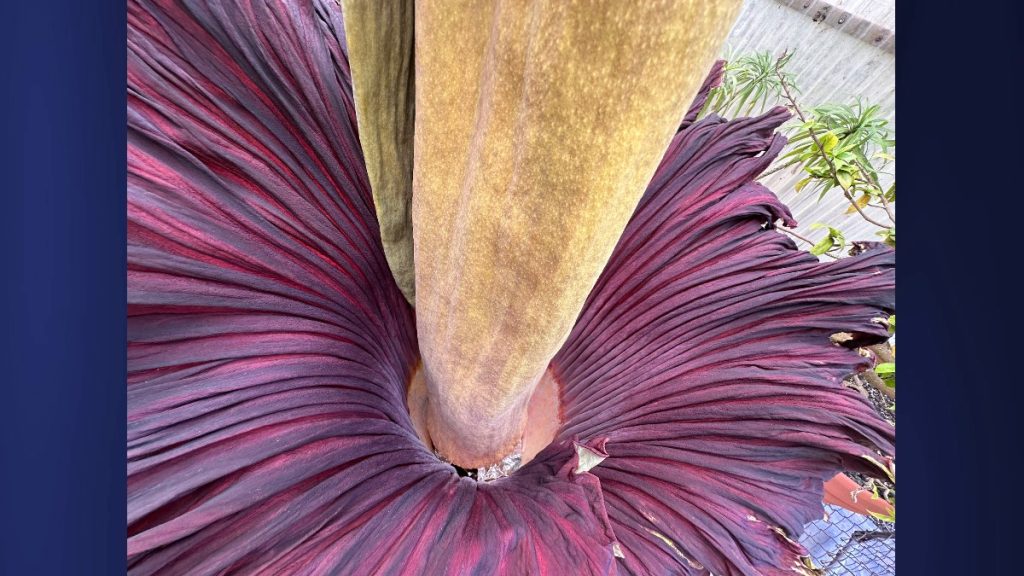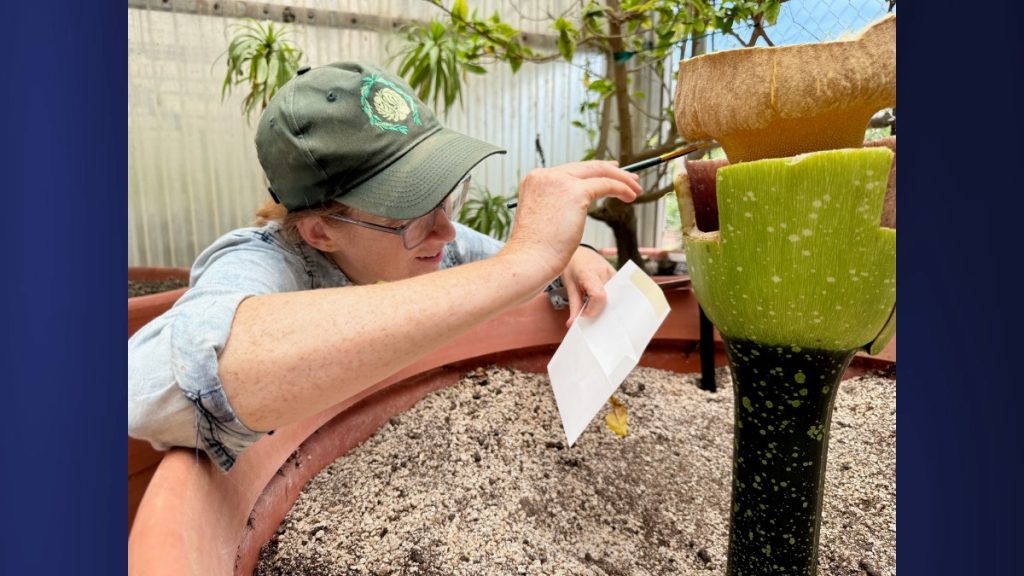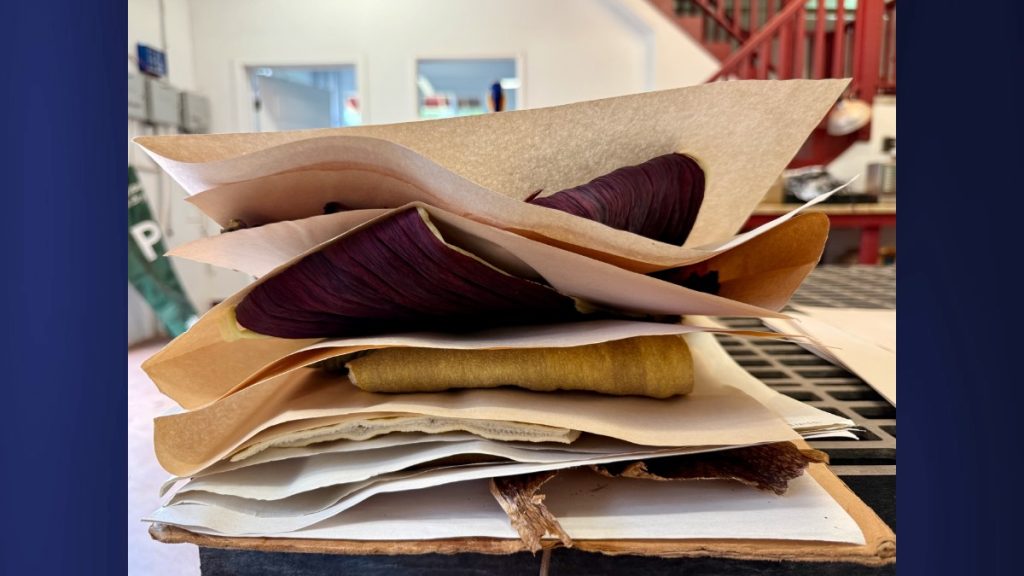Belated bloom of corpse flower dazzles visitors at Kauaʻi botanical garden

The National Tropical Botanical Garden in Lāwaʻi had one of its busiest weekends, as excitement grew for the expected blooming on late Saturday or early Sunday of the famed corpse flower known as Pua Pilo.
Locals and visitors gathered at the conservation nursery in hopes of witnessing the dramatic bloom, in which its petals would open about 3 feet wide and the plant would produce an aroma that mimics rotten flesh to attract its pollinators and spread pollen from one flower to another.
Pua Pilo, which is Hawaiian for stinky flower, was a late bloomer. Finally it bloomed on Monday, said Lauren Greig, the nursery and fern lab manager.
It was the first bloom for the plant that began as a seed nearly seven years ago.

On Sunday, during the flowerʻs short window of pollination, a team at the Kauaʻi botanical garden successfully pollinated Pua Pilo using pollen sourced from the Chicago Botanic Garden.
Pollination is the transfer of pollen from an anther (male part of a plant) to the stigma (the female part), later enabling fertilization and the production of seeds.
By Monday, the bloom began to show signs of decline, which is a promising indicator that the pollination may have been successful, Greig said.
The pollen collected from Pua Pilo flower will be sent to the Chicago Botanic Garden to contribute to its pollen bank and support future conservation efforts.

The corpse flower, native to the rainforests of the Indonesian island of Sumatra, is the largest unbranched inflorescence in the plant kingdom.
The plant on Kauaʻi has now been moved into the nurseryʻs greenhouse, where environmental conditions are better suited for fruit development.
Greig and her team anticipate that the fruit will take approximately six months to reach maturity.
Pua Pilo can bloom again in another two to three years.




